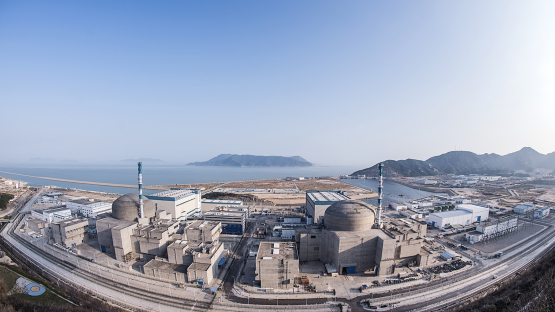The IAEA partnered with nuclear engineering institutions in Pakistan, the United Arab Emirates and the United States of America for an online training course last month on the latest innovations in nuclear power reactor technology development. The course, which took place from 20-23 April, was hosted by a different institution each day and featured virtual tours of facilities, lectures and exercises for 18 young professionals from Indonesia, the Philippines, Saudi Arabia, Sri Lanka and Thailand.
“It felt like we actually visited the hosts' facilities,” said Alvie Asuncion‑Astronomo of the Philippine Nuclear Research Institute. “We gained knowledge on Water Cooled Reactor (WCR) technologies and gained appreciation for the importance of simulators in reactor training and education. The online learning modules and other resources shared through this course are very useful.”
Understanding nuclear reactor technologies and related innovation is crucial for the eventual selection and deployment of the most suitable technology to meet the objectives of a nuclear power programme.
During the daily virtual visits to the University of Sharjah, Pakistan Institute of Engineering and Applied Sciences, and North Carolina State University (NCSU), participants became familiar with different WCR technologies, including through exercises based on simulators these institutions host for reactor training and education. Nuclear power reactor simulators help users understand fundamental concepts behind the behaviour of nuclear power plants and their reactors, including the most widely used water-cooled reactor types.
“This course is part of a wider IAEA effort to support systematic and continuous education of professionals in the nuclear field,” said Tatjana Jevremovic, Team Leader for Water Cooled Reactor Technology Development in the Department of Nuclear Energy. “It offers a comprehensive overview of technologies, which will help countries considering adding nuclear power to their energy mix to make appropriate decisions regarding the technology.”
During virtual exercises participants were divided into four smaller groups and alternated between different ‘rooms’, which explored various topics into more depth. This arrangement allowed for more interaction both with lecturers and among the participants as they focused on particular topics.
Kunthida Waree of Thailand said she especially appreciated the overview of several designs and technologies as well as the NCSU’s Pulstar research reactor facility. “I was happy to learn about beam lines and various types of research,” she said of the training, conducted through the project RAS2/018 “Supporting Decision Making for Nuclear Power Planning and Development - Phase III” of the IAEA’s technical cooperation programme. “I can apply this knowledge to adjust the terms of reference for the new research reactor in my country.”
The IAEA offers a wide spectrum of education and training in the field of advanced nuclear power technologies. One of its education programmes uses educational basic principle simulators, which provide efficient hands‑on learning of the physics and engineering aspects of various reactor types and are available upon request. The IAEA has recently launched new e‑learning modules on water cooled reactors, boiling water reactors, hybrid energy systems and nuclear cogeneration. The Agency also regularly organizes webinars on these topics and its Advanced Reactor Information System provides the design descriptions of evolutionary and innovative advanced nuclear reactors.




